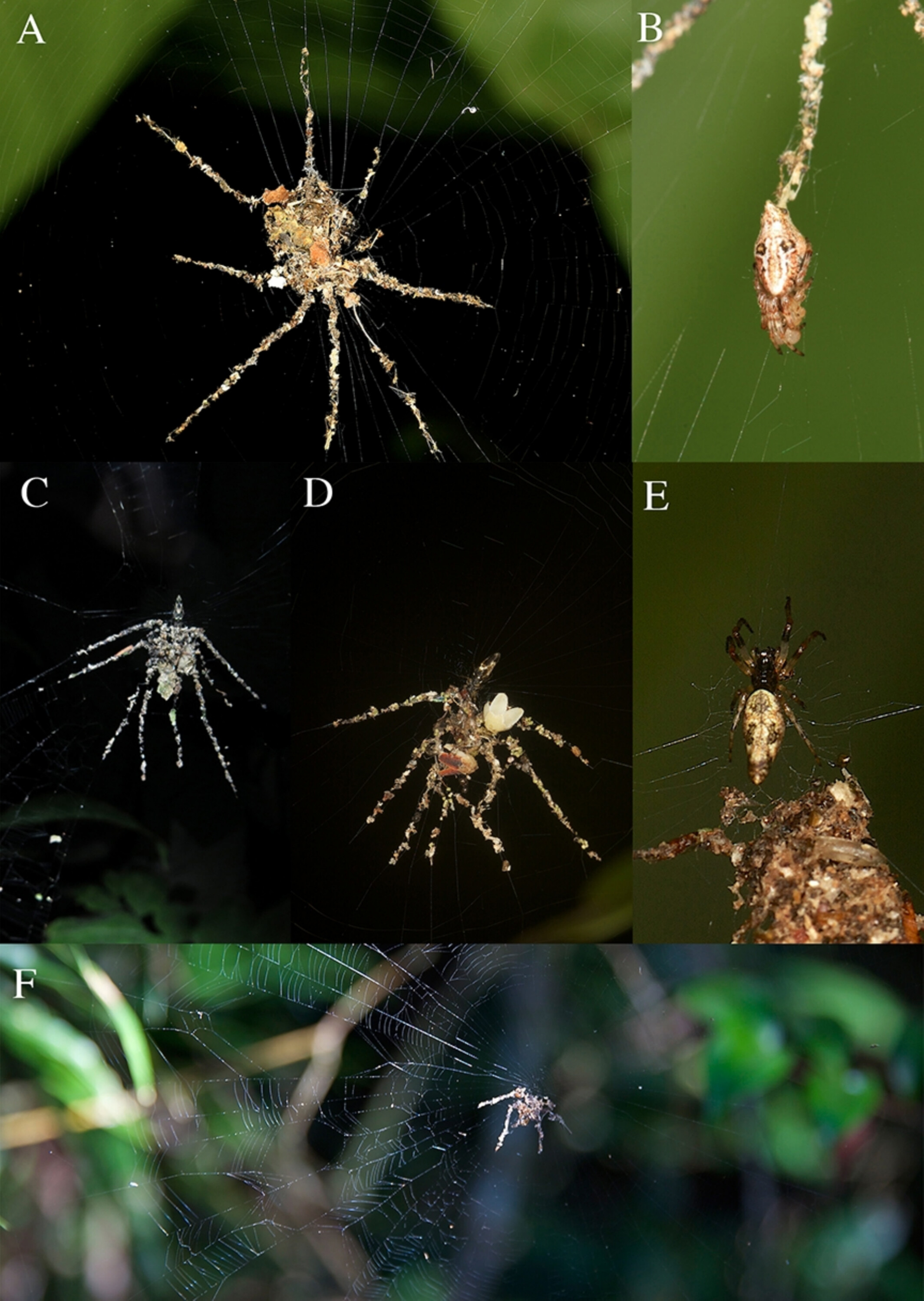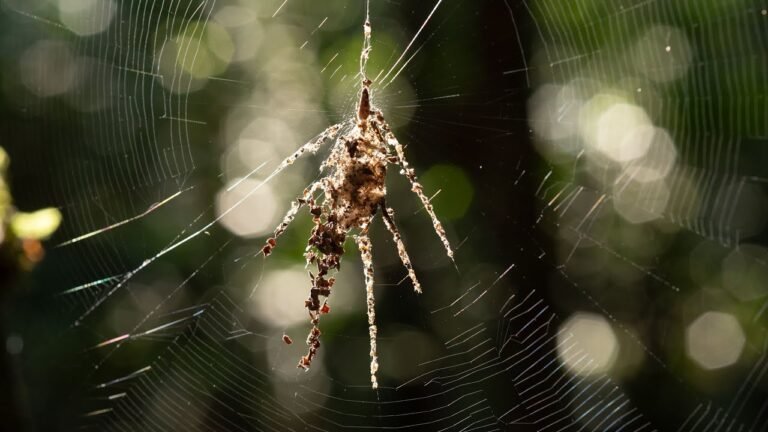Tiny tropical spiders in the Philippines and the Peruvian Amazon build giant, arachnid-like decoys in their webs to scare off predators, new research shows.
The outsize fake spiders are made of silk; plant debris; and dead, disembodied prey. Some decoys look rudimentary, but others accurately imitate the shape of a spider, according to a study published Nov. 6 in the journal Ecology and Evolution.

Watch On
“They don’t just decorate their webs — they meticulously arrange detritus, prey carcasses and silk into a structure that’s not only larger than their own body, but clearly resembles the silhouette of a bigger, menacing spider,” study lead author George Olah, a conservation geneticist at the Australian National University, said in a statement.
Unlike other orb weavers that build silken tubes to hide inside in their webs, the two Cyclosa spiders invest their time, energy and resources into crafting these decoys. This means the fakes are more than a quirky biological observation, study co-author Lawrence Reeves, an assistant professor at the University of Florida’s Medical Entomology Laboratory, said in the statement.
“It illustrates a fundamental evolutionary trade-off in the spider world,” Reeves said.
Researchers have known about Cyclosa spiders’ strange antics for some time, but the new study is the first time the decoy-building behavior has been formally documented and interpreted.
The spiders turn their webs into “theaters of deception” to stave off would-be attackers, Olah said.
The decoys likely intimidate birds, lizards and other natural predators, prompting them to stay away. They may also provide camouflage for the small Cyclosa spiders, which have the same coloration as their creations and can therefore hide among the plant matter and prey remains.

The decoys may be as effective in defending Cyclosa spiders against predators as the retreats other orb weavers build, explaining why the spiders invest their energy into making them, according to the study. When predators approach the webs, Cyclosa spiders concealed within the decoys shake their abdomen to create vibrations in the fake spiders that make them seem alive.
The spiders do this day and night, the researchers wrote in the study. “When further approached, the spider jumped off from the web to the ground,” they noted of a handful of observations in the Peruvian Amazon in 2022, adding that arachnids returned to their webs once the perceived threat was gone.
The decoys may also provide safe places for Cyclosa spiders to lay their eggs, Juan Carlos Yatto, a nature guide in Peru’s Tambopata National Reserve who worked with the study’s authors, said in a video. The spiders move the contents of their webs to new locations by building a single thread, along which they transport their eggs and all the debris and body parts used for their decoy. In this scenario, the disassembled decoy can camouflage the eggs during relocation, Yatto said.
Other benefits of building decoys could be that they attract prey and strengthen spiderwebs against adverse weather, the researchers wrote in the study. Further research is needed to understand these different advantages, Olah said.
Cyclosa spiders and their strangely decorated webs are featured in the documentary series “The Secret Lives of Animals.”


